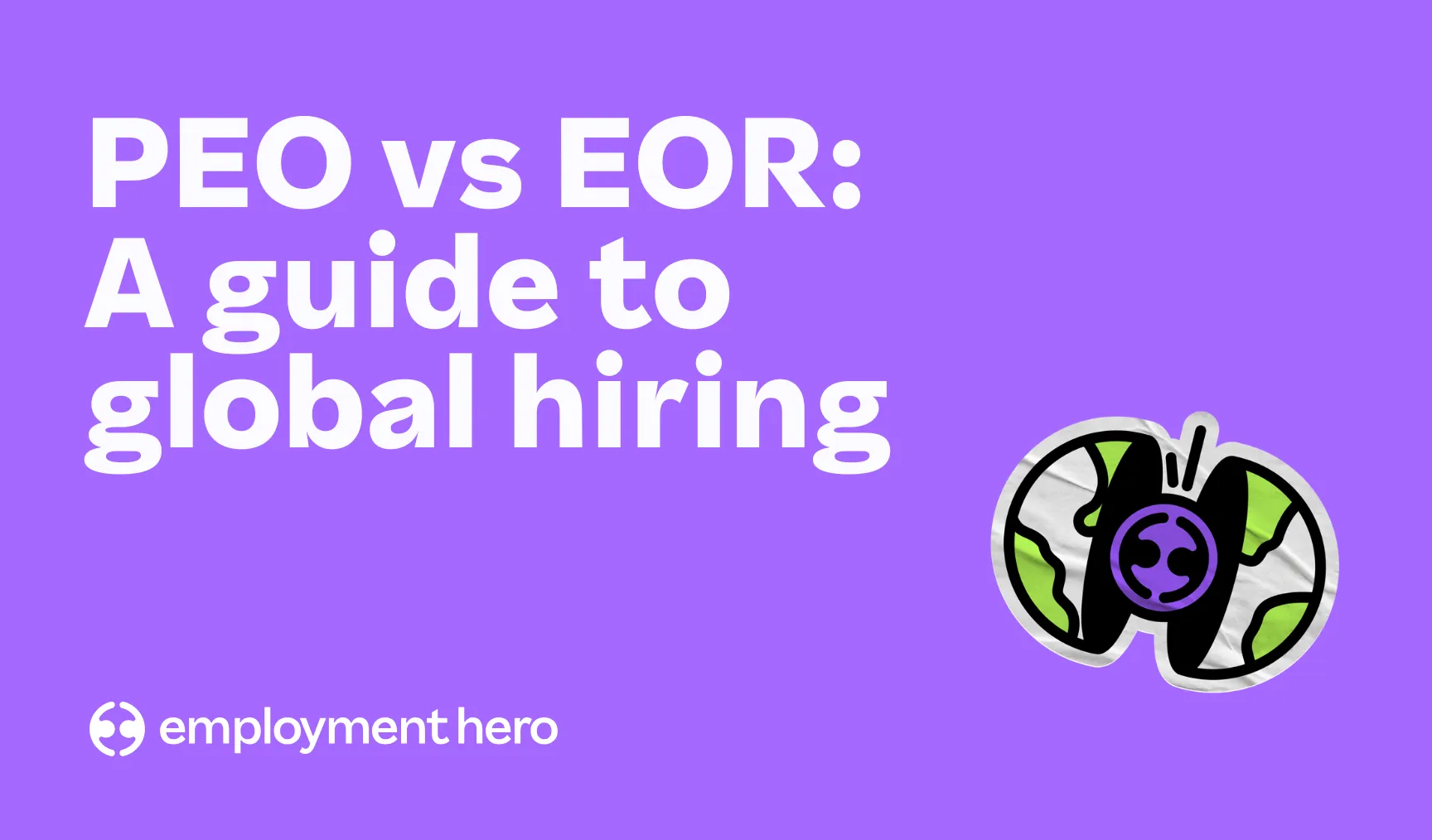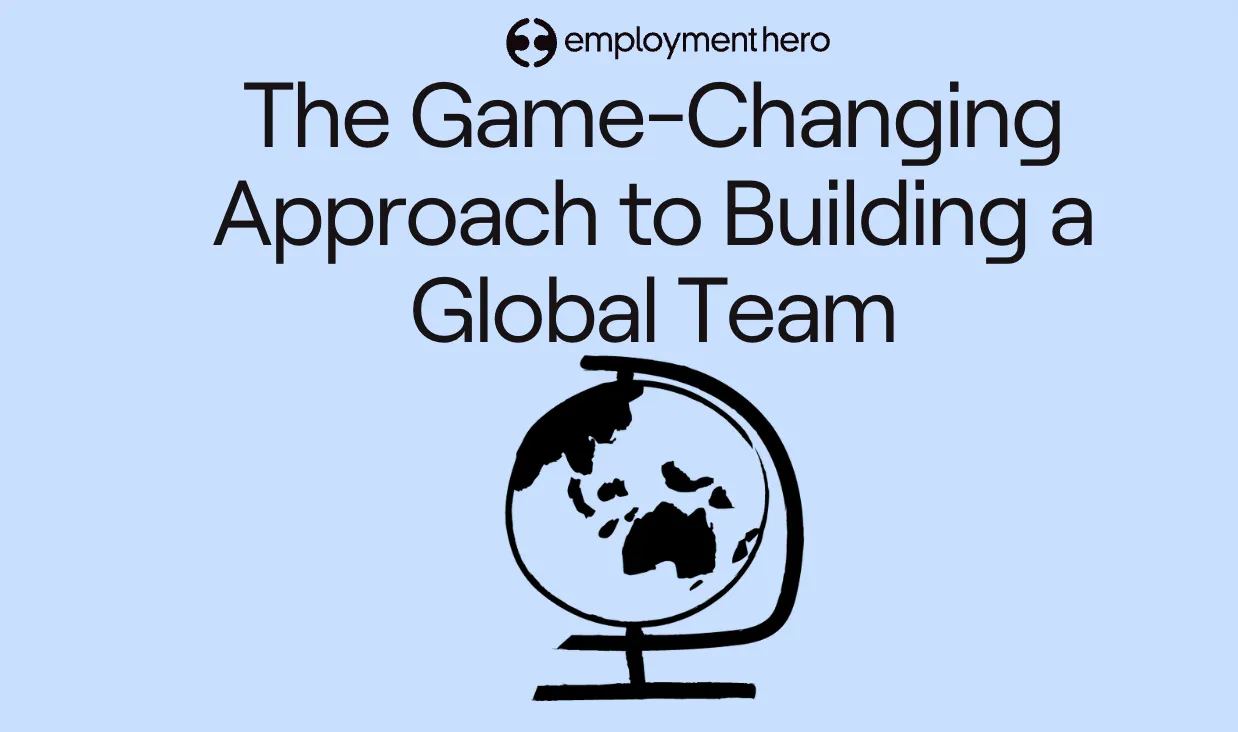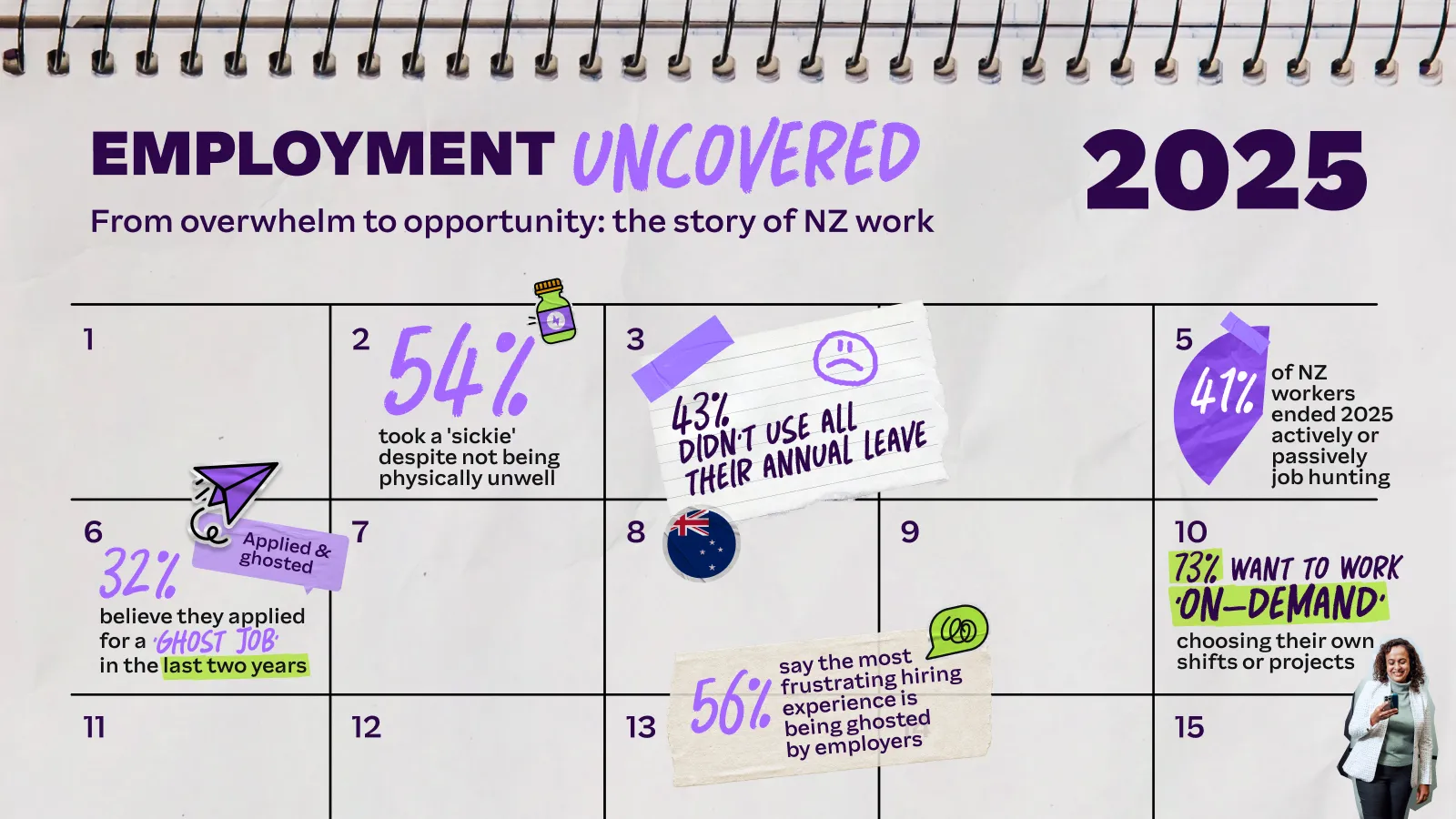Employer Branding Strategies: Attract Top Talent
Let’s dive in to what and how important employer branding is, as well as some actionable advice for you to start implementing today.

Contents
Businesses spend significant time and investment appealing to those who will use their products or services. That’s a given, since your customers affect the success of your business.
However, they’re not the only ones. The people who make up your team are also instrumental to your business success, as are the future employees who could join your ranks. Like your approach to customers, you need to make your business the place to be for present and future employees.
This is where employer branding comes in. It’s the unique identity of your company as an employer, encompassing your culture, values, and the overall employee experience. A strong employer brand helps build a reputation that makes people want to work for you.
Like your customer-facing brand, an employer brand doesn’t arrive overnight. It takes an understanding of your company’s heart and soul, as well as the perspectives of the people you are trying to reach.
To help get you get started, we’ve rounded up some top strategies to help you define and promote your employer brand, so you can attract talent that fits perfectly with your business.
What is employer branding?
In its most simplified form, employer branding is your company’s reputation. It’s how the industry and your employees perceive you as an employer.
There are lots of elements that go into that perception. Your organisation’s mission, values, culture and public persona. It also includes how you support your current employees, and their experience of their work.
Then of course, there’s how you reach potential employees in the first place. If an applicant for one of your vacant roles visited your website, what would they think? Can they visualise what it would be like to work for the company? An effective employer brand should clearly communicate this vision to everyone and anyone.

Why is employer branding important for employers?
Building and investing in your employer brand can pay dividends over time. A strong employer brand positively impacts recruitment, retention, engagement, and market perception. It makes it more likely you’ll be able to attract and retain highly qualified and experienced candidates.
It can also affect your bottom line when it comes to customer sales. For example, a recent study into the homewares industry found that 83% of customers based their purchasing decisions on how the brands treat their employees. With social media, word can get out very quickly – good or bad. One unhappy ex-employee can hugely affect your employer brand and your reputation amongst customers.
All that said, your employer brand has to be an accurate reflection of how your company is. Good employer branding is about creating a strong business, so take the opportunity while building the brand to consider what it says about your company – and potentially where there is space for change.
Who owns employer branding? HR, marketing or leadership?
For Small-to-Medium Enterprises (SMEs) in New Zealand, the question of who “owns” employer branding can feel a bit like a game of pass the parcel. The truth is, it’s rarely just one department; instead, it’s a shared responsibility across the company.
While HR often handles the employee experience, from the recruitment process to retention, and marketing focuses on external perception and communication, leadership sets the overall vision and values. A compelling employer brand relies on all three of these elements.
Are employer branding campaigns worth it?
We get you might be sitting there wondering, is this really that important? Do I really need a strong employer brand? Well, the simple answer is yes.
Having an employer brand is vital to your company’s bottom-line results. To drive your business forward with prospective employees, you need to show the world why your company is a great place to work.
From compensation and benefits packages, to learning and development, the culture within your organisation is a huge determining factor for future job candidates.
Finally, potential employees need to see that employer brand to really reap the rewards. It’s important to consider how you’ll get the word out.
Thankfully, identifying and building your employer brand doesn’t have to be expensive. Small and medium businesses can develop effective strategies without huge budgets or global name recognition.
For example, if you’re based in a small town, getting the word out about the company through referrals from existing employees may be more effective than blowing the budget on a billboard.
How does employer branding impact retention and employee engagement?
One of the most powerful ripple effects of a strong employer brand is its impact on employee retention and engagement. Attracting top talent is one thing. Keeping them is even more important.
When your employer brand is clear and consistent, it creates a powerful sense of belonging for your team. After all, employees who are proud of where they work are more likely to stay. A strong brand helps you hold onto your best people and reduce the costly churn. That’s particularly important right now – find out why New Zealand SMEs shouldn’t be complacent about hiring.
It’s also worth remembering that engaged employees are your business’s true champions. They’re more likely to go the extra mile, contribute innovative ideas, and become advocates for your business, attracting others to join your success story.
What causes a bad employer brand, and how can businesses fix it?
It’s easy to spot what’s behind a great employer brand. Happy employees, great perks, engaging work are all telltale signs of a great place to work. But what about the not-so-great ones? A negative employer brand often comes from a poor experience by employees and candidates. This can manifest in several ways, and for SMEs, understanding these pitfalls is crucial.
One of the quickest ways to damage your employer brand is through a poor candidate experience. If your application process is clunky or communication is non-existent, others will hear about it.
Similarly, an unhealthy workplace culture rife with micromanagement will quickly erode employee trust and enthusiasm. Remember, unhappy employees are vocal employees, and their experiences shape your reputation.
These issues are fixable. Conduct anonymous surveys about your company’s culture, hold honest feedback sessions, and act on what you hear. Invest in your people by creating development opportunities, tackling pressing issues and introducing benefits.
Remember, your employees are your greatest asset. By making employment easier and more valuable for them, you’re not just improving a brand, you’re building a thriving business.

Can small businesses develop employer branding strategies?
Small to medium businesses have several key advantages when it comes to employer branding. As a fast-growing business, you have greater flexibility to play around with different employer branding strategies until you find the ones that stick.
The good news is, that you don’t need an enormous budget and the same name recognition as Google to work on employer branding. Any company can do it.
How to build an employer brand strategy
If you’re starting with a blank page, the first question you need to address is the ‘why’.
Why do your people come to work every day? Why do they enjoy being there?
Go and ask your people and your managers these questions. You’ll be surprised how quickly common themes emerge. These themes are the basis of your employer branding initiatives.
Now you need to articulate this into an employee value proposition. This leads to our first step in the employer branding strategy.
1. Define your employee value proposition (EVP)
Think of your EVP as your elevator pitch to attract new talent. What attracts and retains your talent, and what is your company’s promise to its people? Your employee value proposition (EVP) is the foundation for your employer brand, and it will help your business stand out in a competitive market.
Your EVP should include elements such as rewards and recognition, career development, working arrangements and workplace culture.
Remember, it’s essentially a promise to your people so an EVP must be truthful and clearly articulated to current and future employees. It’s about showcasing the additional perks and benefits that make your company stand out from the rest.
2. Review the candidate experience
Before you dive into creating shiny new employer branding strategies, we suggest running an employer brand audit by reviewing your current candidate experience and jotting down some numbers.
These can include metrics such as time to fill roles or the number of applicants. You could even ask your newest recruits a few questions to gain a better understanding of their experience. By doing this, you’ll be able to assess your current candidate experience, whilst identifying opportunities where you can take it to the next level.
Don’t forget, the candidate experience matters for all the people who apply for your roles. Even if an applicant is unsuccessful, they’ll remember if they had a positive experience with your company.
3. Make onboarding an experience to remember
Onboarding is the first experience any new hire will have with your company, so it’s important to make it seamless and positive. Employees who are engaged and excited from the get-go will have smoother transition periods and potentially stay with the company for longer.
As with the earlier steps, ask questions. Speak to one of your most recent employees and ask them about their onboarding experience. Find out what worked and what could be improved, and act on their feedback.
Consider bringing in employment technology to help you out – Employment Hero can automate most of the onboarding process and reduce paperwork. That’s more time back for team bonding and coffee shouts.
4. Jump on social media to showcase your company’s culture
Many job seekers take to social media to gain a direct insight into a company’s personality and culture. Social media doesn’t just have to be about engaging with your customers, it can also be used to help build your employer brand and visualise your brand’s image.
Whether it’s posting a picture of the cute dog in the office, birthday celebrations or quarterly events, share an inside look into the workplace culture with your followers. Not only does it show your employer branding, but it also provides potential candidates with a good idea of your company values and overall vibe.
5. Use multiple channels to tell your employer brand story
When marketing a product or service, you don’t just use one channel to communicate your offering and brand message.
Instead, you should leverage an array of different platforms like social media, email, blogs, video channels and other forms of messaging to ensure you’re connecting with the largest audience possible.
The same rules apply when it comes to your people. If you want to clearly articulate your employer brand, consider all the different ways you can reach potential job candidates.
6. Work with your existing employees
Motived, engaged and satisfied employees are your strongest brand advocates. If job seekers want to learn more about your employer brand, they’re more than likely to reach out to your company’s employees to get a feel of how it might be working for your company.
Leverage your workforce through employee interviews and testimonials that can be displayed on your website, or shared on platforms like LinkedIn.
7. Offer learning and development opportunities
By providing training and growth opportunities to your employees, you communicate your company’s commitment to ongoing learning and professional development.
Let’s not forget, as your employees develop their skills, the whole organisation benefits, so it’s a win-win situation for everybody. Consider offering special certifications, leadership training, personal interest courses and plenty of avenues for career advancement.
Supporting career development pays dividends. Get started with our career progression plan template.
8. Create an employee referral programme
Speaking of those employees, consider leveraging their networks by introducing a referral programme. Common practice includes some kind of monetary benefit for the referrer following their candidate’s successful application.
This encourages employees to share the word about your company and you could end up with some excellent new hires. After all, good people tend to know good people.
Not sure how to get started? Download our employee referral guide and learn step-by-step how to introduce one into your business.
9. Optimise your website’s career page
Your company’s career page is a core component of your corporate brand. It gives you a chance to broadcast your unique company culture and what it affords to prospective candidates.
Your dedicated careers space should aim to include any key growth metrics and company achievements, employee stories and testimonials, your mission, vision and values, and an overview of the perks provided. Be sure to include some fun visuals alongside these elements to make the page more engaging for readers.
10. Bring in technology to support your goals
An effective and thriving company is one where all those manual and time-consuming processes are seamless. Technology can help with many of those, whether that’s searching for new talent, onboarding a new hire or setting clear performance targets. Here at Employment Hero, our Employment Operating System can streamline all of those, and much more.
By streamlining manual tasks, you’re creating a better work experience for employees and a better candidate experience for prospective employees. All of this can boost your employer brand.
Common mistakes to avoid when developing an employer brand
Developing employer branding strategies isn’t easy. There are a few key mistakes that you should look out for.
Neglecting authenticity
Don’t be tempted to give your company the Instagram treatment and add a ton of ‘filters’. An employer brand isn’t about creating a perfect, unattainable image; it’s about showcasing your true culture. Promising perks or a work environment you can’t deliver can quickly lead to disillusionment and high turnover. Employees will see through a facade, and a dishonest brand is worse than no brand at all.
Inconsistency
Your employer brand should be reflected in every touchpoint – from your job advertisements and career page, to your recruitment process and internal communications. Ensure your leadership team and current employees are aligned with and embody the brand values. Offer the same vision of the company to everyone who comes across it.
Setting and forgetting
Don’t do all the work of finalising your employer brand, just to forget about it for a while. The job market will change and your industry will change – ensure that your employer brand stays up to date. Regularly gather feedback, analyse your retention and engagement metrics, and be prepared to refine your brand strategy based on what you learn.

Examples of a successful employer branding strategy
As it incorporates so many different elements of a company, an employer brand can sometimes feel a little intangible. To get a good idea of what success looks like, it helps to look at the businesses acing their employer branding strategies.
One example from New Zealand is Fletcher Building. Fletcher Building is New Zealand’s largest listed companies, with diverse operations spanning construction, building products, and infrastructure.They’ve cultivated an employer brand that emphasises career development, significant project involvement, and a commitment to safety and community.
They run frequent recruitment campaigns which show their impact on New Zealand’s landscape. They highlight the tangible results of their work, from residential homes to major infrastructure projects. Those campaigns also emphasise the extent of training for their team, providing clear pathways for growth.
This clear communication helps them attract and retain a wide range of talent, from skilled tradespeople to engineers and corporate professionals.
Across the Tasman in Australia, Atlassian is another standout. The software giant is renowned for its unique work culture, which heavily influences its employer branding. They champion transparency, autonomy, and a “team-first” approach.
Atlassian’s employer branding showcases their commitment to allowing employees to work on projects they’re passionate about, fostering a collaborative environment, and offering impressive benefits that support work-life balance. Their “ship it” culture encourages rapid iteration and learning, which is highly appealing to many in the tech sector.
An employer brand is a business necessity
Having a well-defined and easily identifiable employer brand is no longer considered a business luxury, it’s now an absolute must to attract and retain employees.
But building a strong employer brand requires patience. These things don’t just happen overnight.
By implementing these cost-effective branding strategies, you’re well on your way to building an attractive brand image that’ll help engage and inspire your people.
Support a strong employer brand with an Employment Operating System
Building a strong employer brand requires a positive experience for both current and future employees. Our Employment Operating System is here to support that positive experience, making work and employment super easy so you can focus on the fun stuff.
With the Employment OS, you can streamline onboarding to make those all-important first days effortless. You can also get the word out about your company in just a few clicks, with our end-to-end recruitment features.
For existing employees, the Employment OS supports employee engagement with rewards, recognition, and performance tools.The Employment OS sets you up with the building blocks of a fantastic employer brand. If you’re ready to get started, book a demo today.
Related Resources
-
 Read more: PEO vs. EOR: A guide to global hiring
Read more: PEO vs. EOR: A guide to global hiringPEO vs. EOR: A guide to global hiring
Learn the key differences between a PEO and an EOR. Discover why an EOR is the smarter, safer way to…
-
 Read more: How to build a global team without a local entity
Read more: How to build a global team without a local entityHow to build a global team without a local entity
Learn how to streamline your hiring and expand your NZ business globally with an Employer of Record (EOR) without the…
-
 Read more: Employment Uncovered: Inside the Story of New Zealand Work in 2025
Read more: Employment Uncovered: Inside the Story of New Zealand Work in 2025Employment Uncovered: Inside the Story of New Zealand Work in 2025
Inside the story of NZ work in 2025. From rising ‘sickies’ to hiring fatigue, see how Kiwi work patterns are…






















